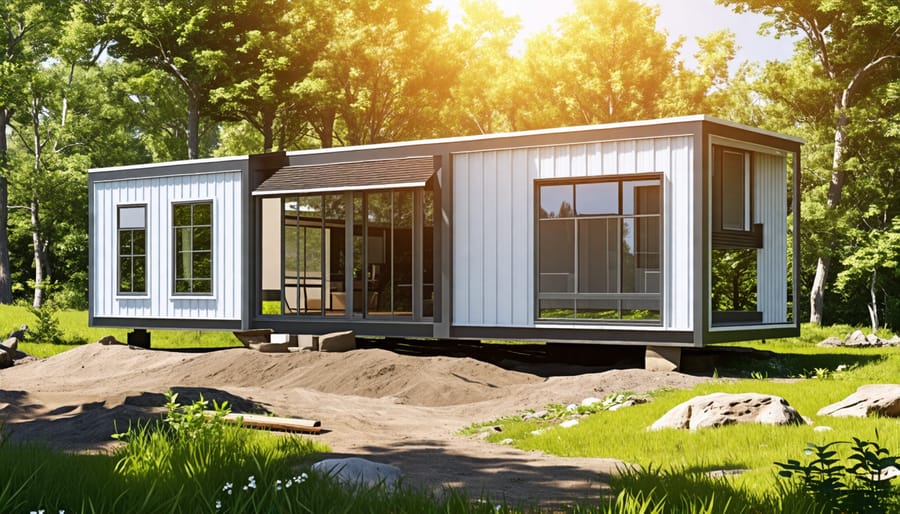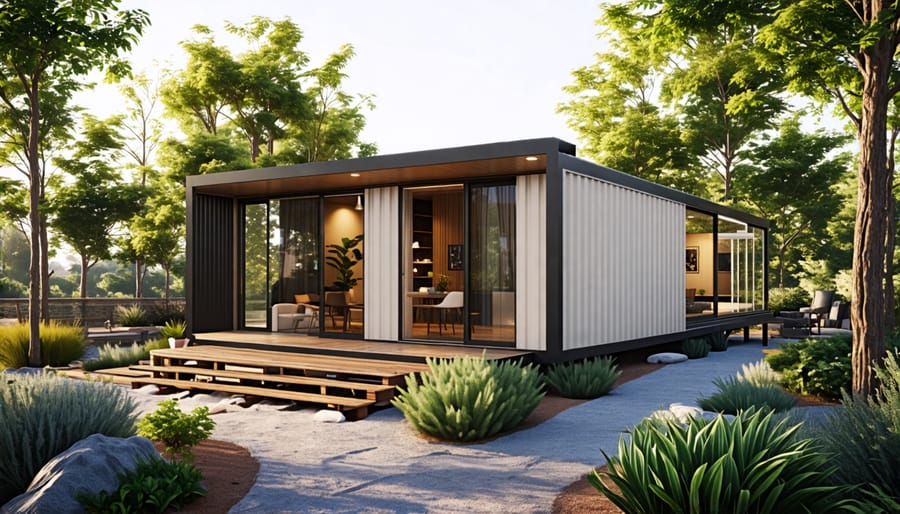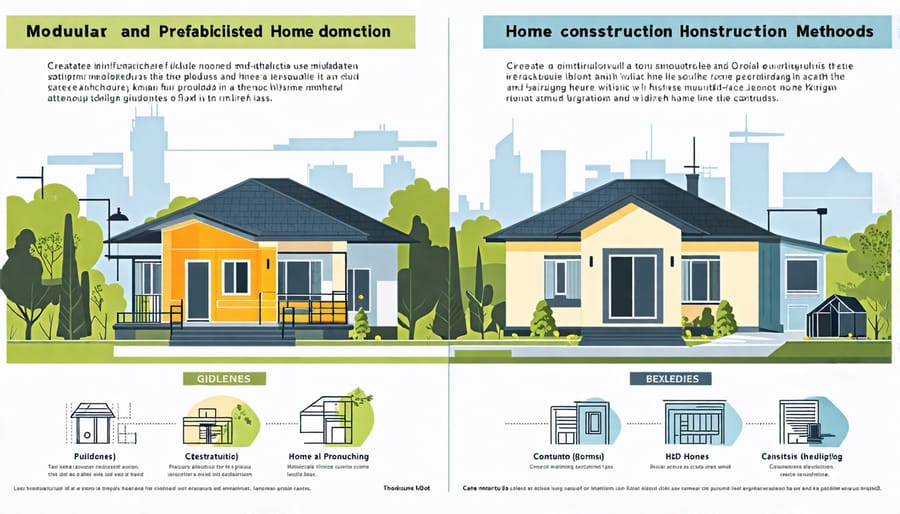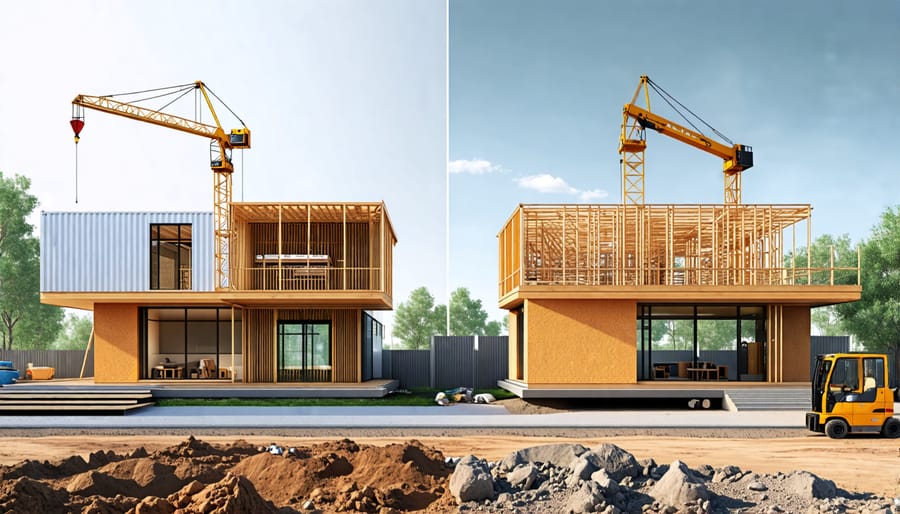Modular and prefabricated homes are revolutionizing the construction industry, offering innovative solutions for faster, more efficient builds. While often used interchangeably, these terms refer to distinct construction methods with significant implications for project timelines, costs, and quality control. This article delves into the key differences between modular and prefabricated homes, providing a comprehensive guide for construction professionals, architects, and decision-makers looking to navigate this rapidly evolving landscape. By exploring the unique advantages, challenges, and applications of each approach, we aim to empower readers with the knowledge needed to make informed choices and unlock the full potential of these cutting-edge construction techniques.
What are Modular Homes?
Modular Construction Process
The modular construction process begins with the design phase, where architects and engineers create detailed plans for each module, considering building codes, energy efficiency, and client specifications. Once the designs are finalized, the construction moves to a controlled factory environment. Here, skilled workers build the individual modules assembly-line style, using high-quality materials and advanced technology to ensure precision and consistency.
Each module is constructed as a separate unit, complete with electrical wiring, plumbing, insulation, interior finishes, and sometimes even appliances. The factory setting allows for rigorous quality control inspections at every stage of the build, minimizing errors and ensuring adherence to safety standards. This controlled environment also reduces construction time and protects materials from weather-related damage.
After the modules are complete, they are transported to the building site on specialized trucks. On-site, a crane carefully lifts and places each module onto a pre-prepared foundation, following the predetermined layout. Professional crews then connect the modules, sealing the joints to create a seamless structure. They also complete any necessary site work, such as connecting utilities and adding exterior finishes like siding or brick.
The result is a high-quality, energy-efficient home that is indistinguishable from a conventionally built one. The modular construction process not only saves time and reduces waste but also allows for greater flexibility in design and customization. With the majority of the work completed off-site, modular homes offer a streamlined, efficient alternative to traditional construction methods.

Benefits of Modular Homes
Modular construction offers numerous benefits that make it an attractive choice for many projects. One of the most significant advantages is the shorter build time, as modules are constructed simultaneously in a controlled factory environment while site work is being completed. This parallel process can reduce construction time by up to 50% compared to traditional methods. Quality control is another key benefit, with strict factory standards ensuring consistent, high-quality modules. Constructing in a climate-controlled setting also minimizes the risk of weather-related delays and damage. Additionally, modular construction often results in cost savings due to reduced labor costs, material waste, and on-site disturbances. These advantages have led to innovative projects like Starbucks’ energy-efficient modular store, showcasing the potential of this construction method to deliver high-performance, sustainable buildings in a shorter timeframe and with greater predictability.
Understanding Prefabricated Homes

Types of Prefab Homes
Prefabricated homes encompass a variety of construction methods and designs. Panelized homes are built using factory-constructed wall panels, which are then assembled on-site, offering a balance between customization and efficiency. Kit homes, also known as pre-cut homes, provide all necessary materials in a package, allowing for on-site assembly according to the provided plans. This option appeals to those seeking a hands-on approach while still benefiting from pre-manufactured components.
Another growing trend in prefab housing is the use of shipping containers. These sturdy steel structures are repurposed and modified to create unique, eco-friendly living spaces. Shipping container homes offer a modern aesthetic and can be stacked or arranged in various configurations to suit different needs and preferences.
Regardless of the specific prefab type chosen, these homes provide the advantages of shorter construction timelines, reduced waste, and often, lower costs compared to traditional site-built homes. As the prefabricated housing industry continues to evolve, more innovative and sustainable options are becoming available to meet the diverse needs of homeowners and construction professionals alike.
Prefab Home Advantages
Prefabricated homes offer numerous advantages that make them an attractive choice for homeowners and builders alike. One of the most significant benefits is affordability. By streamlining the construction process and minimizing material waste, prefab homes can be built at a lower cost compared to traditional site-built homes. This cost-effectiveness allows more people to achieve their dream of homeownership without compromising on quality.
Moreover, prefab homes are often more eco-friendly than their conventional counterparts. The controlled factory environment enables better resource management, reducing the environmental impact of construction. Many prefab home manufacturers also prioritize the use of sustainable materials and energy-efficient features, such as high-performance insulation and solar panels, resulting in an ultra-efficient home that minimizes its carbon footprint.
Another advantage of prefab homes is design flexibility. Contrary to popular belief, prefabricated construction does not limit creativity or customization. With advanced computer-aided design (CAD) technology, architects and designers can create a wide range of styles and layouts to suit individual preferences and site requirements. From modern minimalist designs to traditional craftsman-style homes, prefab construction offers endless possibilities for personalization without sacrificing the benefits of off-site manufacturing.

Modular vs Prefab: Key Differences
Construction Methods
Modular homes are constructed using a factory-built approach, where the entire home is divided into separate modules or sections. These modules are built in a controlled factory environment, complete with electrical, plumbing, and interior finishes. Once completed, the modules are transported to the building site and assembled using cranes, forming a cohesive structure.
In contrast, prefabricated homes encompass a broader range of construction techniques. While some prefab homes may use a modular approach, others employ panel systems or precut and preassembled components. Panel systems involve constructing walls, floors, and roof sections in a factory, which are then shipped and assembled on-site. Precut and preassembled components, such as trusses or framing packages, are manufactured off-site and then integrated into the home’s construction at the building location.
The key distinction lies in the extent of factory-based construction. Modular homes are largely built in a factory setting, while prefabricated homes may involve a mix of factory-built components and on-site construction. The choice between these methods often depends on factors such as design complexity, site accessibility, and local building codes. Ultimately, both approaches aim to streamline the construction process, reduce waste, and improve quality control compared to traditional stick-built methods.
Customization and Design
Modular homes offer a higher degree of design flexibility compared to prefabricated homes. While prefab homes are typically built according to pre-existing templates with limited customization options, modular homes can be extensively customized to meet specific client requirements. Modular construction allows for greater control over floor plans, room sizes, and interior finishes, enabling architects and designers to create unique, personalized spaces.
However, it’s important to note that both modular and prefab homes may have certain design limitations due to the nature of their construction process. Modular homes, though more adaptable than prefab, still rely on standardized modules that must fit together seamlessly on-site. Prefabricated homes, on the other hand, are more restricted in terms of design changes, as they are built in a controlled factory environment based on established templates.
Ultimately, the choice between modular and prefab homes depends on the project’s specific design requirements, budget, and timeline. While prefab homes offer a more streamlined, cost-effective solution for projects with standard design needs, modular homes provide a balance between efficiency and customization, making them suitable for a wider range of applications.
Cost and Timelines
Modular and prefabricated homes offer potential cost savings compared to traditional on-site construction. By manufacturing components in a controlled factory environment, material waste is minimized, and labor costs are reduced. Prefab homes typically require less on-site labor, further cutting costs. However, the extent of savings depends on factors such as design complexity, materials used, and transportation distances.
In terms of construction timelines, both modular and prefab homes can be built faster than traditional homes. Factory production allows for parallel construction, where multiple components are built simultaneously. Weather delays are minimized, and quality control is enhanced. Once on-site, assembly is quicker, as components are designed to fit together seamlessly. This can result in projects being completed 30-50% faster than traditional builds, without compromising energy efficiency or quality. However, careful planning and coordination are crucial to realize these timeline benefits fully.
Conclusion
Understanding the key differences between modular and prefabricated homes is crucial for construction professionals, architects, engineers, and project managers to make informed decisions and stay competitive in the industry. Modular homes offer greater design flexibility and customization options, while prefabricated homes provide a more standardized approach with faster construction timelines. Both methods offer benefits in terms of quality control, cost-effectiveness, and reduced waste compared to traditional on-site construction.
Modular construction allows for more complex designs and larger structures, making it suitable for a wider range of projects, from single-family homes to multi-story buildings. On the other hand, prefabricated homes are ideal for smaller, more affordable housing projects or temporary structures. Recognizing these distinctions helps professionals select the most appropriate construction method for their specific project requirements, budget, and timeline.
As the construction industry continues to evolve and embrace innovative building techniques, modular and prefabricated construction are gaining popularity due to their potential for sustainable construction practices. By minimizing on-site waste, reducing transportation emissions, and optimizing resource efficiency, these methods align with the growing demand for eco-friendly building solutions. Industry professionals who understand the nuances of modular and prefabricated construction can position themselves at the forefront of this shift towards more sustainable building practices.
In conclusion, grasping the fundamental differences between modular and prefabricated homes is essential for construction professionals to make well-informed decisions, adapt to changing industry trends, and deliver high-quality projects that meet client expectations. By leveraging the strengths of each construction method and staying attuned to advancements in sustainable building practices, industry experts can drive innovation and shape the future of the built environment.

